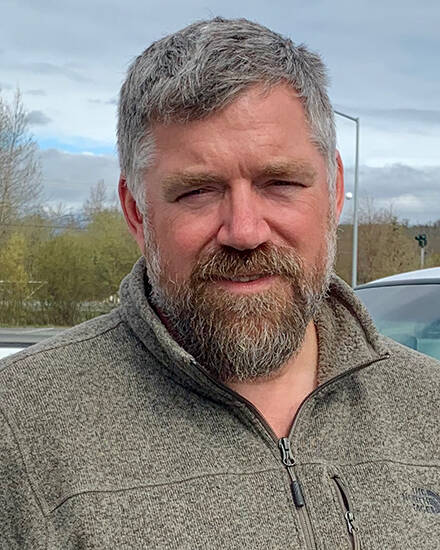For many Alaskans, spring’s warming temperatures and lengthening days stir a sense of apprehension about the threat of wildfires. Last season, just under 300,000 acres burned statewide, including high-impact fires like the Lost Horse Creek Fire and Anderson Complex. These Interior Alaska fires, which threatened nearby communities and required significant firefighting effort, were a stark reminder of fire’s potential devastation.
Our northern neighbors in Canada experienced devastation across the country last year. More than 37 million acres burned in a record-shattering season that lasted seven months. Eight people died, about 232,000 residents evacuated from more than 200 communities, and millions, including in the eastern U.S. and western Europe, experienced unhealthy air quality from smoke.
The unprecedented situation in Canada required an equally unprecedented contribution of international firefighting resources. More than 5,500 individuals from 12 countries and the European Union provided assistance, including many from Alaska.
The intensity of the 2023 Canada fire season and the increasing trend in fire activity in North America over the past few decades coincide with rapid climate change. From 2003 to 2023 wildfires in Alaska burned more than 32 million acres, more than double the acres burned during the previous two decades.
Hot, dry and windy weather conditions that raise fire danger are becoming more frequent, and fires are starting earlier in the year and ending later. When human activity sparks an ignition in this new fire regime, a wildfire can quickly spread and endanger people and property. Dead grass and brush also more easily ignite in a drier climate.
Alaskans saw what happened in Canada last year, and they know it can happen here too. They recognize we need to prevent and prepare for wildfires across the state — from the time the snow melts until it falls again. During Alaska Wildland Fire Prevention and Preparedness Week (May 4-10), we ask people in Alaska to reflect on key ways to help protect each other and our communities from wildfire.
1. Alaska’s fire season is longer.
On average, Alaska’s snowpack now melts two weeks earlier than it did in the late 1990s. This trend has pushed the fire season start date earlier. Beginning April 1, Division of Forestry & Fire Protection (DOF) burn permits (https://dnr.alaska.gov/burn) are required on all state, municipal and private lands that don’t fall under a local government burn permit program. These permits have guidelines to follow for the safe burning of yard debris, using a burn barrel or burning off lawns.
2. Human-caused fires are preventable.
People cause approximately 60% of Alaska’s wildfires. Those human-caused fires tend to occur closer to communities, threaten lives and property, and require more resources to control than lightning-caused fires. Preventing these accidental human ignitions is the most effective way to reduce wildfire costs and limit damages. Be vigilant with anything that can spark a fire, including equipment like chain saws and off-road vehicles, burn barrels, barbecues, ashes and campfires — especially in dry and windy weather. Of the 36 fires reported by Thursday, May 2, all 36 have been determined to be caused by humans. While these fires have fortunately been small, some have threatened homes and required division wildland firefighters and local fire departments to respond.
3. Wildfire preparedness to protect communities and homes is a shared endeavor.
Constructing fuel breaks between populated areas and wildlands is a proven way to protect Alaska communities from wildfires and save money. A fuel break is a gap in vegetation that acts as a barrier to slow or stop the spread of wildfire. Federal, state, Indigenous and local agencies are working together to create fuel breaks that reduce flammable vegetation and enable firefighters to work more safely near communities. Fuel breaks helped firefighters protect nearby communities during the Shovel Creek and McKinley fires in 2019 and the Lost Horse Creek Fire in 2023. A new interagency flyer describes fuel breaks, with links to examples and recommendations.
Homeowners should follow FIREWISE guidelines found on the DOF website to help prepare their property before a wildfire occurs. Implementing these FIREWISE measures can help your property withstand a wildfire even without intervention by firefighters, who may need to travel a great distance to respond.
4. Smoky days are increasing across Alaska.
During active wildfire seasons, smoke particulates pollute the air. Oftentimes, air quality in Alaska is impacted by smoke from fires other countries. Visibility can be so limited that aviation, including evacuations and aerial firefighting, is not possible. Smoke poses a significant health hazard, especially to children, the elderly, and those with existing heart and lung conditions. Learn how to reduce your exposure to smoke.
More information about how Alaska’s fire seasons are changing is available in a report called Alaska’s Changing Wildfire Environment from the University of Alaska Fairbanks International Arctic Research Center and the Alaska Fire Science Consortium.
Tyler Anderson leads Fire Operations for the U.S. Forest Service in Alaska. Kyle Cowan is the manager of the Bureau of Land Management Alaska Fire Service. McDonald deputy director of Fire Protection Norm McDonald, Alaska Division of Forestry & Fire Protection.

